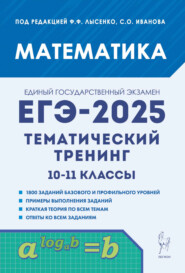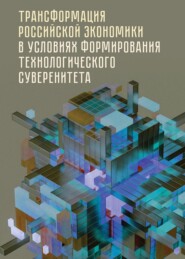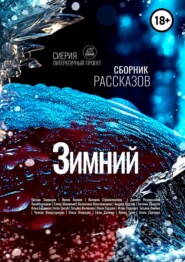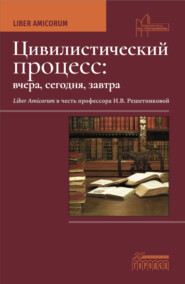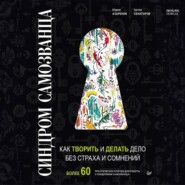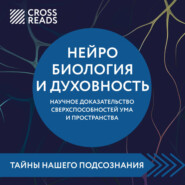По всем вопросам обращайтесь на: info@litportal.ru
(©) 2003-2025.
✖
Введение в аддиктологию
Настройки чтения
Размер шрифта
Высота строк
Поля
5.Alexander, B. K., Beyerstein, B. L., Hadaway, P. F., Coambs, R. B. (1981). Effect of early and later colony housing on oral ingestion of morphine in rats. Pharmacology, Biochemistry and Behavior, 15(4), 571–576. https://doi.org/10.1016/0091–3057(81)90211–2
6.American Society of Addiction Medicine. (2011). Public Policy Statement: Definition of Addiction. In American Society of Addiction Medicine. (https://www.asam.org/docs/default-source/public-policy-statements/1definition_of_addiction_long_4–11.pdf?sfvrsn = a8f64512_4)
7.American Society of Addiction Medicine. (2019). Definition of Addiction. In American Society of Addiction Medicine. (https://www.asam.org/quality-care/definition-of-addiction)
8.Anthony, J. C., Warner, L. A., Kessler, R. C. (1994). Comparative Epidemiology of Dependence on Tobacco, Alcohol, Controlled Substances, and Inhalants: Basic Findings From the National Comorbidity Survey. Experimental and Clinical Psychopharmacology, 2(3), 244–268. https://doi.org/10.1037/1064–1297.2.3.244
9.Babor, T. F., McRee, B. G., Kassebaum, P. A., Grimaldi, P. L., Ahmed, K., Bray, J. (2007). Screening, Brief Intervention, and Referral to Treatment (SBIRT): Toward a public health approach to the management of substance abuse. Substance Abuse, 28(3), 7–30. https://doi.org/10.1300/J465v28n03_03
10.Bassareo, V., Di Chiara, G. (1999). Differential responsiveness of dopamine transmission to food-stimuli in nucleus accumbens shell/core compartments. Neuroscience, 89(3), 637–641. https://doi.org/10.1016/S0306–4522(98)00583–1
11.Becker, G. S., Murphy, K. M. (1988). ATheory of Rational Addiction. Journal of Political Economy, 96(4), 675–700.
12.Bickel, W. K., Crabbe, J. C., Sher, K. J. (2019). What Is Addiction? How Can Animal and Human Research Be Used to Advance Research, Diagnosis, and Treatment of Alcohol and Other Substance Use Disorders? Alcoholism: Clinical and Experimental Research, 43(1), 6–21. https://doi.org/10.1111/acer.13912
13.Breiter, H. C., Gollub, R. L., Weisskoff, R. M., Kennedy, D. N., Makris, N., Berke, J. D., Goodman, J. M., Kantor, H. L., Gastfriend, D. R., Riorden, J. P., Mathew, R. T., Rosen, B. R., Hyman, S. E. (1997). Acute Effects of Cocaine on Human Brain Activity and Emotion. Neuron, 19(3), 591–611.
14.Brewer, J. A., Potenza, M. N. (2008). The neurobiology and genetics of impulse control disorders: Relationships to drug addictions. Biochemical Pharmacology, 75(1), 63–75. https://doi.org/10.1016/j.bcp.2007.06.043
15.Childress, A., McLellan, A., Ehrman, R., O’Brien, C. (1988). Classically conditioned responses in opioid and cocaine dependence: a role in relapse. NIDA Research Monograph, 84, 25–43.
16.Cloninger, C. R. (1986). Unified biosocial theory of personality and its role in the development of anxiety. Psychiatric Developments, 3(2), 167–226.
17.Cloninger, C. R. (1987). Asystematic method for clinical description and classification of personality variants: Aproposal. Archives of General Psychiatry, 44(6), 573–588.
18.Cummings, J. L. (2000). Awindow on the role of dopamine in addiction disorders. Journal of Neurology Neurosurgery and Psychiatry, 68(4), 404. https://doi.org/10.1136/jnnp.68.4.404
19.Di Chiara, G., Imperato, A. (1988). Drugs abused by humans preferentially increase synaptic dopamine concentrations in the mesolimbic system of freely moving rats. Proceedings of the National Academy of Sciences of the United States of America, 85(14), 5274–5278. https://doi.org/10.1073/pnas.85.14.5274
20.Di Chiara, Gaetano. (2002). Nucleus accumbens shell and core dopamine: Differential role in behavior and addiction. Behavioural Brain Research, 137(1–2), 75–114. https://doi.org/10.1016/S0166–4328(02)00286–3
21.Di Chiara, Gaetano, Bassareo, V., Fenu, S., De Luca, M. A., Spina, L., Cadoni,C., Acquas, E., Carboni, E., Valentini, V., Lecca, D. (2004). Dopamine and drug addiction: The nucleus accumbens shell connection. Neuropharmacology, 47(SUPPL. 1), 227–241. https://doi.org/10.1016/j.neuropharm.2004.06.032
22.Edwards, W. (1961). Behavioral decision theory. Annual Review of Psychology 12, 12, 473–498.
23.Fiorino, D. F., Coury, A., Phillips, A. G. (1997). Dynamic changes in nucleus accumbens dopamine efflux during the Coolidge effect in male rats. Journal of Neuroscience, 17(12), 4849–4855. https://doi.org/10.1523/jneurosci.17–12–04849.1997
24.Franken, I. H. A., Booij, J., Van Den Brink, W. (2005). The role of dopamine in human addiction: From reward to motivated attention. European Journal of Pharmacology, 526(1–3), 199–206. https://doi.org/10.1016/j.ejphar.2005.09.025
25.Gleick, J. (2011). Chaos: making a new science. In Open Road, New York.
26.Goldstein, R. Z., Leskovjan, A. C., Hoff, A. L., Hitzemann, R., Bashan, F., Khalsa, S. S., Wang, G. J., Fowler, J. S., Volkow, N. D. (2004). Severity of neuropsychological impairment in cocaine and alcohol addiction: Association with metabolism in the prefrontal cortex. Neuropsychologia, 42(11), 1447–1458. https://doi.org/10.1016/j.neuropsychologia.2004.04.002
27.Goldstein, R. Z., Volkow, N. D. (2002). Drug addiction and its underlying neurobiological basis: Neuroimaging evidence for the involvement of the frontal cortex. American Journal of Psychiatry, 159(10), 1642–1652. https://doi.org/10.1176/appi.ajp.159.10.1642
28.Grant, S., London, E. D., Newlin, D. B., Villemagne, V. L., Liu, X., Contoreggi,C., Phillips, R. L., Kimes, A. S., Margolint, A. (1996). Activation of memory circuits during cue-elicited cocaine craving. Proceedings of the National Academy of Sciences, 93(21), 12040–12045. https://doi.org/10.1073/pnas.93.21.12040
29.Grimm, J. W., Hope, B. T., Wise, R. A., Shaham, Y. (2001). Incubation of cocaine craving after withdrawal. Nature, 412(6843), 141–142. https://doi.org/10.1038/35084134
30.Hari, J. (2015). Chasing the scream: The first and last days of the war on drugs. In Bloomsbury Publishing USA.
31.Heather, N., Segal, G. (2017). Addiction and choice: rethinking the relationship. In Oxford University Press.
32.Heilig, M., MacKillop, J., Martinez, D., Rehm, J., Leggio, L., Vanderschuren,L. J. M. J. (2021). Addiction as a brain disease revised: why it still matters, and the need for consilience. Neuropsychopharmacology, 46(10), 1715–1723. https://doi.org/10.1038/s41386–020–00950-y
33.Heyman, G. M. (2009). Addiction: Adisorder of choice. In Cambridge, MA: Harvard University Press.
34.Higgins, S. T., Heil, S. H., Lussier, J. P. (2004). Clinical implications of reinforcement as a determinant of substance use disorders. Annual Review of Psychology, 55, 431–461. https://doi.org/10.1146/annurev.psych.55.090902.142033
35.Kelly, J. F., Westerhoff, C. M. (2010). Does it matter how we refer to individuals with substance-related conditions? Arandomized study of two commonly used terms. International Journal of Drug Policy, 21(3), 202–207. https://doi.org/10.1016/j.drugpo.2009.10.010
36.Khantzian, E. J. (1997). The self-medication hypothesis of substance use disorders: Areconsideration and recent applications. Harvard Review of Psychiatry, 4(5), 231–244. https://doi.org/10.3109/10673229709030550
37.Kim, S. H., Baik, S. H., Park, C. S., Kim, S. J., Choi, S. W., Kim, S. E. (2011). Reduced striatal dopamine D2 receptors in people with Internet addiction. NeuroReport, 22(8), 407–411. https://doi.org/10.1097/WNR.0b013e328346e16e
38.Kovacic, P. (2005). Unifying mechanism for addiction and toxicity of abused drugs with application to dopamine and glutamate mediators: Electron transfer and reactive oxygen species. Medical Hypotheses, 65(1), 90–96. https://doi.org/10.1016/j.mehy.2005.01.031
39.Latt, N. (2009). Addiction medicine. In Oxford University Press, USA.
40.Lenoir, M., Cantin, L., Vanhille, N., Serre, F., Ahmed, S. H. (2013). Extended Heroin Access Increases Heroin Choices Over aPotent Nondrug Alternative. 1209–1220. https://doi.org/10.1038/npp.2013.17
41.Leshner, A. I. (1997). Addiction is a brain disease, and it matters. Science, 278, 45–47. https://doi.org/10.3389/fpsyt.2013.00024
42.McLellan, A. T., Lewis, D. C., O’brien, C. P., Kleber, H. D. (2000). Drug dependence, a chronic medical illness: implications for treatment, insurance, and outcomes evaluation. JAMA, 284(13), 1689–1695. https://doi:10.1001/jama.284.13.1689
43.Michie, S., Van Stralen, M. M., West, R. (2011). The behaviour change wheel: a new method for characterising and designing behaviour change interventions. Implementation Science, 6(1), 1–12. https://doi.org/10.1001/archderm.1985.01660070119033
44.Mook, D. (1995). Motivation: The organization of action. Norton. London.
45.Perry, J. L., Carroll, M. E. (2008). The role of impulsive behavior in drug abuse. Psychopharmacology, 200(1), 1–26. https://doi.org/10.1007/s00213–008–1173–0
46.Peters, J., Pattij, T., De Vries, T. J. (2013). Targeting cocaine versus heroin memories: Divergent roles within ventromedial prefrontal cortex. Trends in Pharmacological Sciences, 34(12), 689–695. https://doi.org/10.1016/j.tips.2013.10.004
47.Robbins, T. W., Everitt, B. J. (1999). Drug addiction: bad habits add up. Nature, 398(6728), 567–570.
48.Robins, L. N., Helzer, J. E., Davis, D. H. (1975). Narcotic Use in Southeast Asia and Afterward: An Interview Study of 898 Vietnam Returnees. Archives of General Psychiatry, 32(8), 955–961. https://doi.org/10.1001/archpsyc.1975.01760260019001
49.Robinson, T. E., Berridge, K. C. (1993). The neural basis of drug craving: An incentive-sensitization theory of addiction. Brain Research Reviews, 18(3), 247–291. https://doi.org/10.1016/0165–0173(93)90013-P
50.Robinson, T. E., Berridge, K. C. (2003a). Addiction. Annual Review of Psychology, 54(1), 25–53. https://doi.org/10.1146/annurev.psych.54.101601.145237
51.Robinson, T. E., Berridge, K. C. (2003b). Addiction. Annual Review of Psychology, 54, 25–53. https://doi.org/10.1146/annurev.psych.54.101601.145237
52.Saitz, R. (2005). Unhealthy Alcohol Use. New England Journal of Medicine, 352(6), 596–607. https://doi.org/10.1016/j.cld.2016.02.003
53.Saunders, J. B., Degenhardt, L., Reed, G. M., Poznyak, V. (2019). Alcohol Use Disorders in ICD-11: Past, Present, and Future. Alcoholism: Clinical and Experimental Research, 43(8), 1617–1631. https://doi.org/10.1111/acer.14128
54.Schaler, J. A. (2011). Addiction is a choice. In Open Court.






